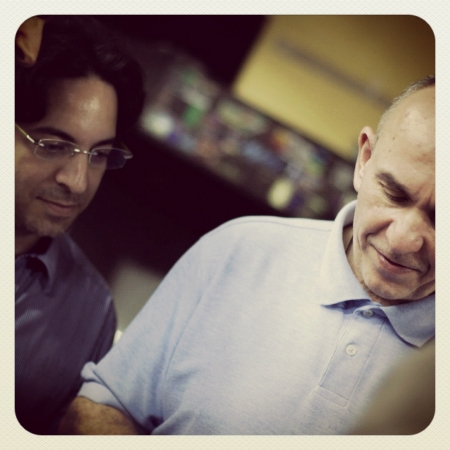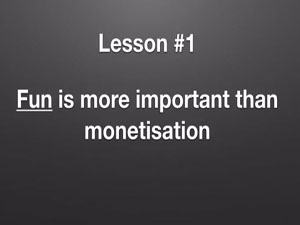.
If you got to this page by following the link I carved into the cube, click here!
Yesterday I had the pleasure of meeting Peter Molyneux, the famous game designer, at the GarageGeeks.
We had an interesting conversation about his new company 22cans and about the first of the 22 experiments he plans to release on his way to a brand new mobile game. The first experiment is called Curiosity and you can already download it from the App Store.
Curiosity isn’t exactly a game, but more of a social experiment: A cube composed of layers of tiny cubes holds in it’s center a special prize, that only 2 people in the world knows what it is – but is supposed to be life-changing for the person getting it. There are 60 Billion cubes needs to be peeled off in order to get to the center, and the whole world (or, more precisely, anyone who have the app) is participating in peeling them.
Peter refused to say who was the other person (beside himself) who knows what the prize is, but he agreed to tell us it wasn’t an Apple employee. Apple, apparently, gave them a hard time approving the app since they wanted to make sure there is nothing in the hidden content that violates their policy.
We also asked him about cheating – since, after all, taking the cubes is based on the ping of the person. What prevents a person from writing a script that ‘mines’ the cube and get him the prize. Peter said they can’t possibly do a hack-proof system, but they will try to spot patterns of cheaters, and every cube that person removed from the total will be then restored to the game world, possibly with a considerable amount of cubes. (They guys were laughing that instead of dealing with cheaters themselves, 22cans will try to get the other angry players “take care” of them.)
Peter kept talking about the radical change in the practice of game design he experience moving from big console, AAA titles into the social and mobile world. Instead of working for 3 years and with hundreds of people on the tiniest detail in a game, which will only be released in 3 years, you now design and ship a product within a month and a small team. And instead of receiving feedback mostly by reading blogs and comments, you can actually see stats in real-time.
I touched on the practical aspect of this change in a previous post, but I’m still amused every time I read or hear one of my game designers ‘heros’ fascinated by the world I always worked in.
I would *love* to do an epic, bigger-than-life, mega game with movie-quality experience, but I can’t see myself working on a product for 3 years before it’s out. Or not having analytics to guide me along the way. It sound so absurd to me now. If you’re shaping an experience for millions of players, there is no way you could make it fit these people just off the top of your head. Even if you’re good – that’s too much of a financial risk (and with all due respect – in my book a successful game must makes money).
So, I’ll let you enjoy some videos where Peter talks about the experiment, and I’ll go back to playing it.
Interview:
Gameplay:




